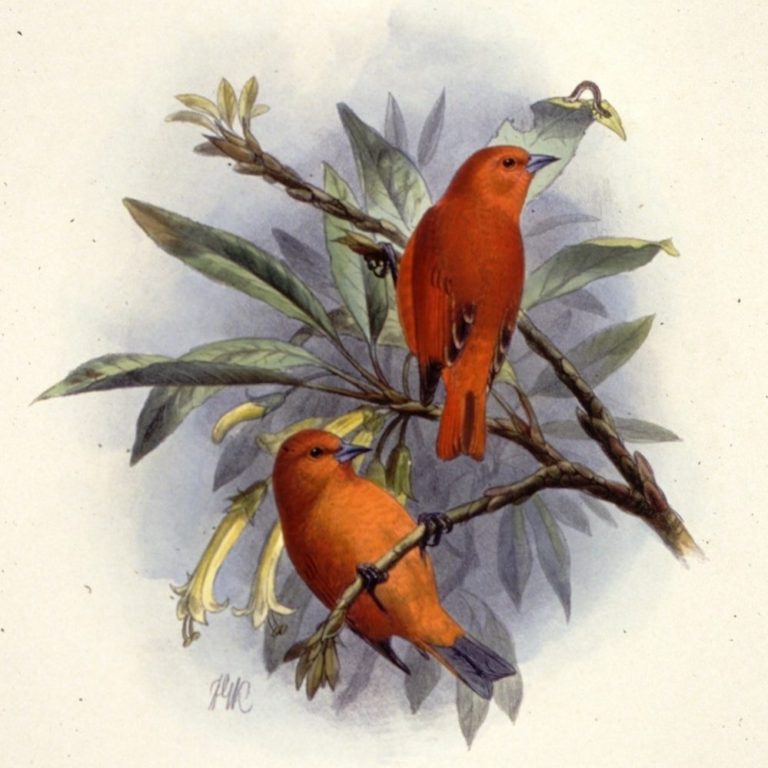Birdfinding.info ⇒ The last observation that is generally accepted as reliable was in 1900 or 1901 in Wahiawa. E. Wolstenholme collected the last specimen on April 24, 1893. It remained common in mountain forests of Oahu through the mid-1800s (e.g., in 1837 many were collected in the Nu’uanu Valley) but declined rapidly toward the end of the century. The most recent reported observation was in December 1976 near the summit of the Schofield-Waikane Trail above Wahiawa, but this seems unlikely to be correct.
Oahu Akepa †
Loxops wolstenholmei
Extinct. Formerly endemic to Oahu.
Identification
Similar to Hawaii Akepa but bill gray, male plumage rufous-orange above and paler reddish-orange below, and female darker olive-gray.
Notes
Monotypic species. Traditionally considered conspecific with Maui and Hawaii Akepas, but differed in coloration. Mitochondrial DNA analysis has enabled the conclusion that they were distinct at the species level.
References
BirdLife International. 2017. Loxops wolstenholmei (amended version of 2016 assessment). The IUCN Red List of Threatened Species 2017: e.T103824105A117232993. https://dx.doi.org/10.2305/IUCN.UK.2017-3.RLTS.T103824105A117232993.en. (Accessed May 16, 2020.)
Hume, J.P. 2017. Extinct Birds (Second Edition). Bloomsbury Publishing PLC, London.
Pratt, H.D. 2005. The Hawaiian Honeycreepers: Drepanidinae. Oxford University Press.
Pyle, R.L., and P. Pyle. 2017. The Birds of the Hawaiian Islands: Occurrence, History, Distribution, and Status. Version 2 (January 1, 2017). http://hbs.bishopmuseum.org/birds/rlp-monograph/. B.P. Bishop Museum, Honolulu, Hawaii.
